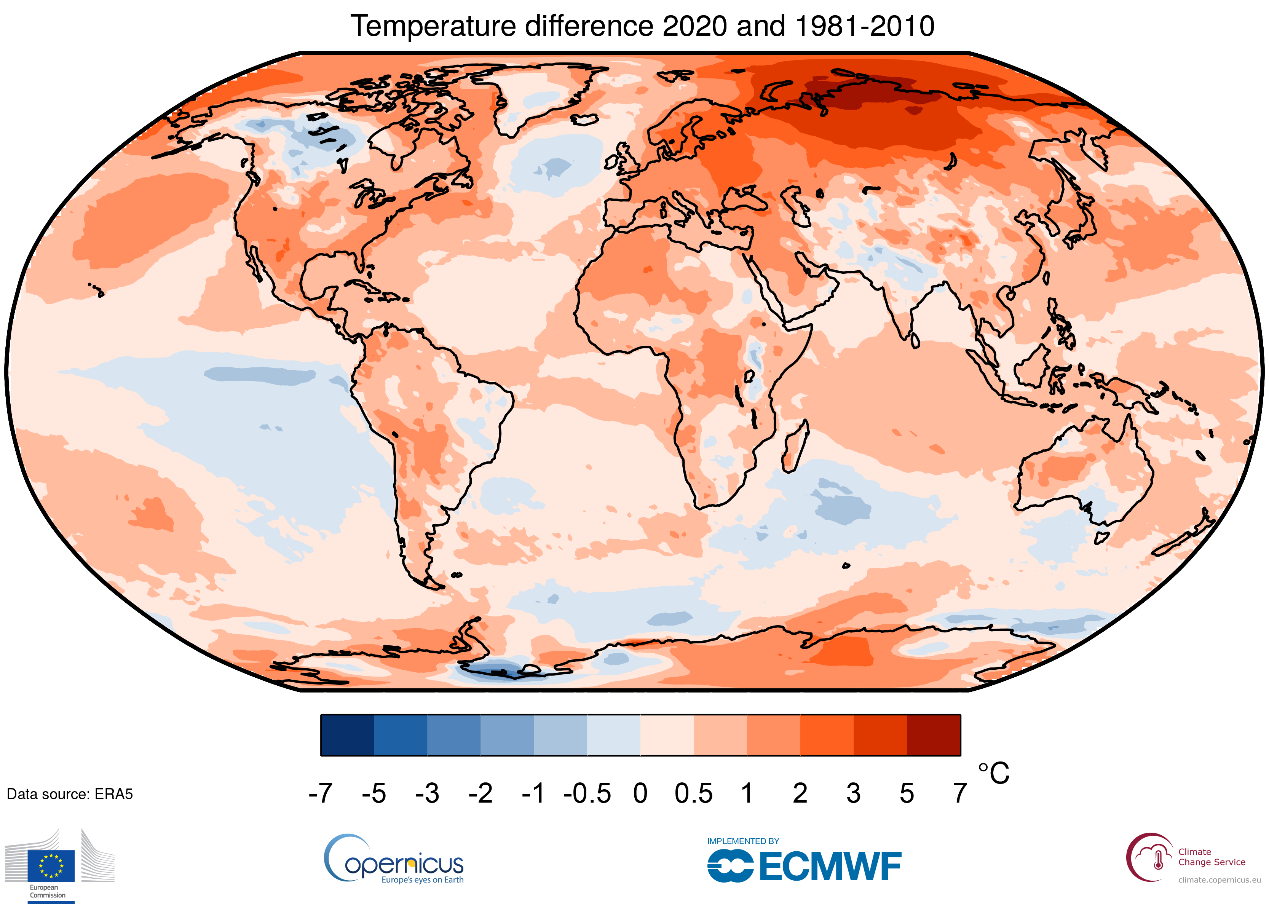China is Doing Its Best Combating a Prominent Threat–Global Warming

Without any doubt, the planet will keep warming in this century. The thing that perplexes climate scientists is how much the temperature will rise by 2100.
If some good is to come from the novel coronavirus that has swept the world since the beginning of 2020, it is that unprecedented lockdowns have resulted in a significant drop in greenhouse gas (GHG) emissions.
Indeed, data released by Carbon Monitor programme on Nature in January, co-led by Zhu Liu, an Earth-system scientist at Tsinghua University in Beijing, revealed that carbon emission fell by an unprecedented 6.4 percent in 2020.
But, just as some optimists were beginning to spot a silver lining in the disastrous pandemic, delusions were swiftly checked by 2020’s soaring temperature.
2020 tied for the hottest year on record
According to NASA, 2020 was the warmest year ever on record. The European Union’s Copernicus Climate Change Service (C3S) reported that 2020 was tied with the previous warmest year (2016). While the US National Oceanic and Atmosphere Administration (NOAA) said that 2020 was slightly cooler than 2016.
Different from 2016 when a strong El Niño – a weather pattern usually warms the planet – contributed to the exceptionally high temperature, 2020 tied with 2016 as the warmest year despite the presence of a La Niña, which has a cooling effect on the temperature. “This actually testifies to the faster speed of global warming,” Huang Gang, a climate scientist at Institute of Atmospheric Physics (IAP) under the Chinese Academy of Sciences told China Focus.
Despite the plunge of GHG emissions in 2020, “CO2 long remains in the atmosphere and warming is related to cumulative emissions, which means the GHG already emitted will be destined to contribute to global warming,” Huang explained, “The forced emission reduction is not sustainable anyway.”
In the final analysis, however, Huang noted that it was unimportant whether 2020 was the warmest, joint, or second warmest year on record. “The point is the perilous trend,” he warned.
Both C3S and the World Meteorological Organization reported that the last six years were the warmest on record and that 2020 capped the warmest decade.
The joint assessments from these institutions reported that the Earth was about 1.2 degrees Celsius warmer than the pre-industrial levels, which made us a step closer to the limit stipulated by the Paris Agreement, which aims to keep global warming well below 2, preferably 1.5 degree Celsius. “There has been a consensus among global climate institutions that the planet is still heating up,” Huang told China Focus.

Not only is the global surface temperature soaring, but the ocean, which absorbs more than 90 percent of the global heat, is warming as well.
According to a recent study co-authored by climate scientist Lijing Cheng from the Institute of Atmospheric Physics of China, the temperature of world oceans hit a new record in 2020. The team also noted that the five warmest years on record all occurred in the last five years.
“Without any doubt, the planet will keep warming in this century. The thing that perplexes climate scientists is how much the temperature will rise by 2100.” Huang said.
Act now, before it’s too late
With all the climate data pointing in one direction – and the scientific community adamant that warming is a direct result of rising carbon emissions – to deny global warming is to deny reality.
It is encouraging that, despite the unprecedented coronavirus pandemic, China has not reneged on its climate commitments. Instead, the biggest emitter of GHG in the world doubled down. In a speech at the UN General Assembly (UNGA) on September 22, 2020, President Xi Jinping announced that China would aim to reach peak emissions before 2030 and achieve carbon neutrality by 2060.
Much of the world praised China for its monumental commitment against global warming, but some viewed it as a political stunt or empty pledge. In response to the latter group, actions speak louder than words, so let’s review China’s actions.
In 2009, leaders in Beijing pledged that China would cut carbon intensity (CO2 emissions per unit) by 40-45 percent based on 2005 level by 2020. According to China’s top climate change negotiator, Xie Zhenhua, China achieved this goal by the end of 2017, having cut emissions by 46 percent. China’s latest white paper on energy consumption showed also that China’s energy intensity in 2019 had decreased by 48.1 percent since 2005, beating its Copenhagen targets.
China committed itself in 2009 to expand the share of non-fossil fuels to 15 percent of the total. By the end of 2019, China had achieved its goal with non-fossil energy accounting for 15.3 percent of total energy consumption. Such records are cogent examples that when China sets a climate target, it follows through.
Now, China is striving to meet its National Determined Contributions (NDC) target. It even updated the target — in the speech on the Climate Ambition Summit in mid-December 2020, President Xi announced that China would lower its carbon intensity by 65 percent by 2030, compared with 2005, and raise non-fossil fuels share to 25 percent.
Moreover, the 14 Five-Year Plan for National Economic and Social Development and Long-Term Goals for 2035, which will bring an overarching framework for the fulfillment of the carbon neutrality pledge, is on the way.
It should be recognized, however, that in seeking to reach peak emissions by 2030 – and net-zero by 2060 — formidable challenges do exist.
“The peak of CO2 emissions in Europe occurred by early 1980s, and it aims to reach carbon neutral in 2050. America’s emissions peaked in 2005 and it will become carbon neutral by 2050,” said He Jiankun, vice chairman of China’s National Experts Panel on Climate Change, “But what about China? The time span between the peak and the neutral is only 30 years.” The limited-time makes the mission more demanding.
The author is a journalist of China Focus.
Edited by Jamie Leigh Wright.
 Facebook
Facebook
 Twitter
Twitter
 Linkedin
Linkedin
 Google +
Google +










